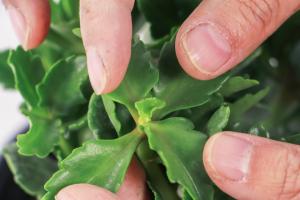Introduction
Planting fruit trees is an investment in both time and resources. If you want to ensure that your fruit trees produce healthy, vibrant fruit for years to come, it's important to know how to prune them. Pruning fruit trees helps promote healthy growth, eliminates dead or diseased limbs, and encourages better fruit production. In this article, we'll cover the basics of how to prune fruit trees when planting.
Tools Needed
Before we dive into how to prune fruit trees, let's talk about the tools you'll need. A good pair of pruning shears is essential. Look for a pair with sharp blades, a sturdy construction, and a comfortable grip. You'll also need a pruning saw for larger branches, gloves to protect your hands, and protective eyewear to keep debris out of your eyes.
When to Prune
Pruning fruit trees is typically done in the late winter or early spring when the tree is still dormant. This is the best time to prune because the tree is less likely to experience stress and because you can see the tree's structure more clearly without leaves or fruit in the way. However, if you need to remove a dead or diseased branch, you should do so as soon as you notice the problem.
Before You Begin
Before you start pruning your fruit trees, it's important to do some prep work. Remove any damaged or dead branches, and take note of any limbs that are crisscrossing or growing toward the tree's center. You want to create an open structure that allows for proper light and air circulation.
The Basics of Pruning Fruit Trees
When pruning fruit trees, you want to aim for a simple, open structure that allows for even light distribution and air flow. You should also remove any dead, diseased, or damaged branches to prevent the spread of disease. Always start with the largest, heaviest branches and work your way down in size. Make clean cuts at a 45-degree angle to encourage healing.
Pruning Different Types of Fruit Trees
Different fruit trees require different pruning techniques. Here are a few basic tips for pruning common types of fruit trees:
Apple Trees: Aim for a strong central leader with evenly spaced side branches. Thin out any spindly or crowded branches.
Peach Trees: Prune to create a bowl shape with an open center, removing any overlapping or weak branches.
Cherry Trees: Remove any suckers or water sprouts and thin out branches to promote even fruit production.
Conclusion
Pruning fruit trees when planting is an essential step in ensuring that your trees stay healthy and productive. By following these basic guidelines and using the proper tools, you can create an open, even structure that promotes airflow and healthy growth. With a little effort and attention, your fruit trees will provide you with fresh, delicious fruit for years to come.

 how many times do yo...
how many times do yo... how many planted tre...
how many planted tre... how many pine trees ...
how many pine trees ... how many pecan trees...
how many pecan trees... how many plants comp...
how many plants comp... how many plants can ...
how many plants can ... how many plants and ...
how many plants and ... how many pepper plan...
how many pepper plan...

































